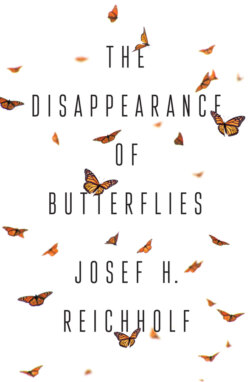Читать книгу The Disappearance of Butterflies - Josef H. Reichholf - Страница 6
Acknowledgements
ОглавлениеI owe thanks to many people – too many to be able to list them all by name. The two main forces that led to the creation of this book came from my wife and my closest friends, on the one hand, and my publisher and agent, on the other. Working together with my literary agent Dr Martin Brinkmann and my editor Christian Koth of C. Hanser Verlag was both enjoyable and stimulating. The results make me feel optimistic, despite having experienced the decline of moths and butterflies over the last 50 years, that there is at least a glimmer of hope. If such a leading German publishing house can dedicate itself so closely to the subject of the disappearance of moths and butterflies, one must believe that there are still opportunities. I am very grateful to C. Hanser Verlag for conveying such optimism.
I thank my doctoral supervisor, the late Dr Wolfgang Engelhardt, for proposing the topic of aquatic moths and the extensive engagement in nature conservation that this led to, at a time when he himself was president of the Deutscher Naturschutzring. Through his suggestion, he effectively set the course of my professional life as a zoologist. Of central importance also was the Bavarian State Collection of Zoology (ZSM): a unique institution, where, as a member, one could feel ‘butterflies’ in one’s stomach, while above, on the roof, real blue butterflies blithely flew around. It is beyond my abilities to try to put into words my gratitude for my time spent at the ZSM and my time as a teacher at both of the Munich universities, even though my essential attitude to life was formed professionally by these experiences. I am grateful to my wife, Miki Sakamoto-Reichholf, for the fact that I was able to combine them so well with my private life. She shares my enthusiasm for moths and butterflies.
It is a great pleasure to me to see my book translated into English, which opens my findings to an international audience. Some aspects, however, refer to the regional situation in Germany, especially in Bavaria and the adjacent regions of Austria. Others are of a much more widespread coverage. We are faced with the fact that the decline of butterflies, moths and other insects is a global phenomenon of our time. Many local and regional findings can be fitted together like a mosaic to create a picture that is already quite clear. It shows the continuing loss of biodiversity and natural richness.
I would like to thank Polity, especially Elise Heslinga, and the translator Gwen Clayton for their engagement. For me, it was a highly rewarding experience to work together with them in order to achieve a good translation. In my thanks I would also like to include John F. Burton for his highly valuable contributions to the English edition of my book. Last but not least, it is my hope that readers will be infected by the enthusiasm that I have felt throughout my years of research on moths and butterflies. This book is about their life and their future.
